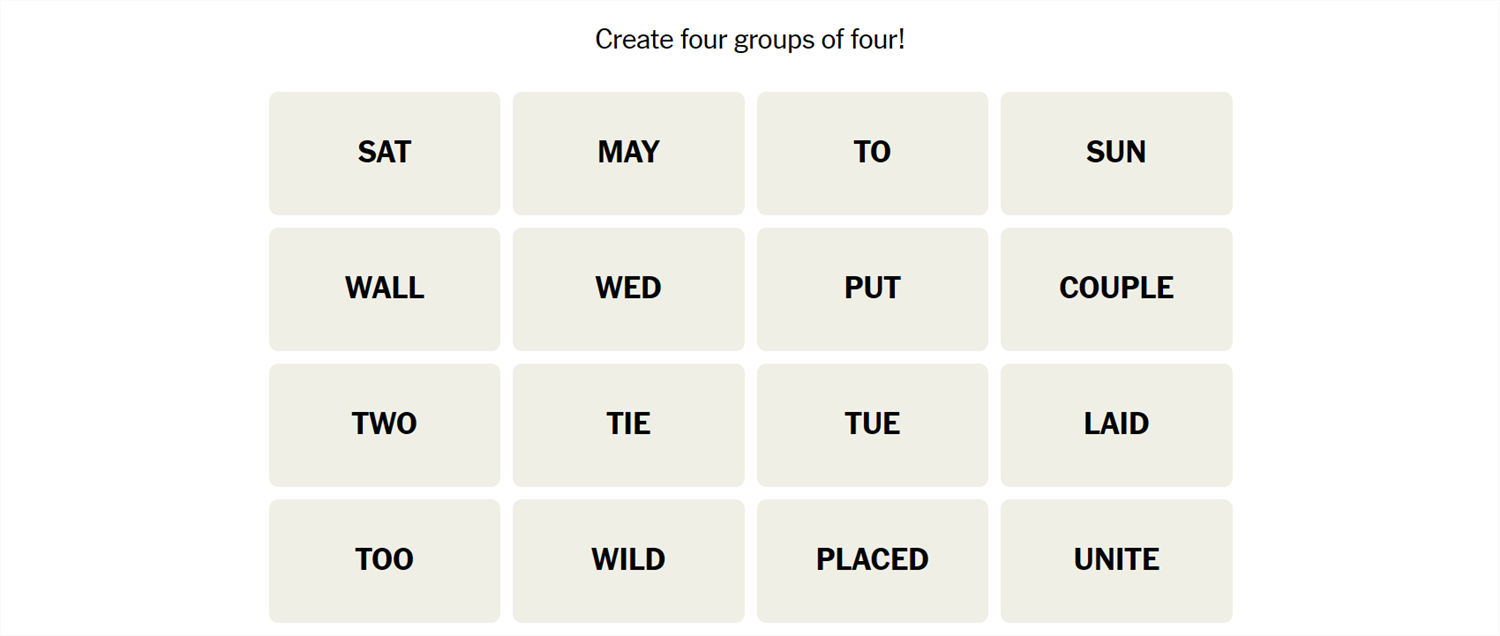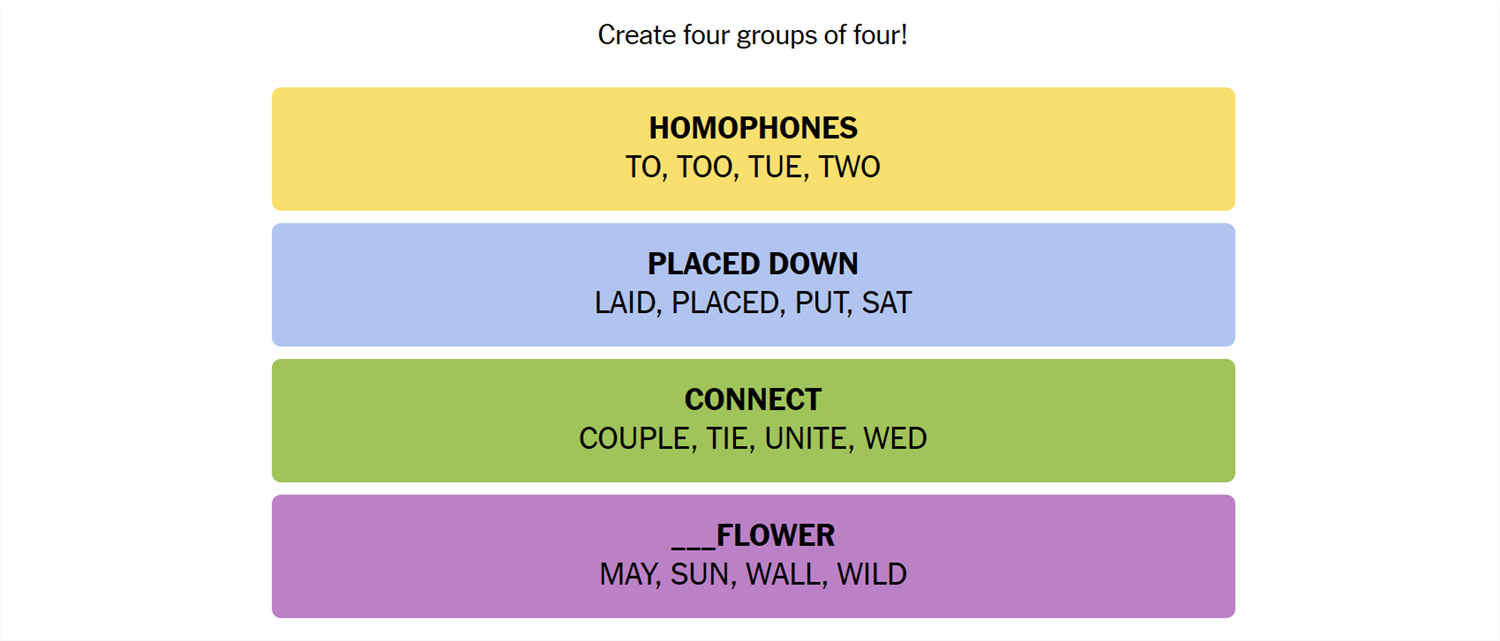Connections is a game from the New York Times that challenges you to find the association between words. It sounds easy, but it isn’t—Connections categories can be almost anything, and they’re usually quite specific. If you need a hand getting the answers, we’ve got you covered.
What Is Connections?
Connections is a game from the New York Times. The objective is simple: sort 16 words into groups of 4. Each group of words will be connected by some common idea or theme. That common element could be anything. We have seen everything from games that rely on the number of letters in the words to categories that require you to spot an extra letter at the end of the word. Sometimes they’re references to economics, other times they reference fairy tales. There is no telling what sort of association there will be between words.
Once you’re confident you understand the connection, select 4 words, then hit “Submit.” You have only four attempts in total, so don’t be too guess-happy.
Hints for Today’s Connections Groups
Here are a few hints for the 384th Connections game to get you started:
- Yellow: They sound alike.
- Green: This game?
- Blue: All past tense.
- Purple: There is a word that ties all of this group together.
If you still need help, the actual group names are:
- Yellow: Homophones
- Green: Connect
- Blue: Placed Down
- Purple: _____ Flower
Today’s NYT Connections Answers
Homophones (Yellow):
To, Too, Tue, Two
Connect (Green):
Couple, Tie, Unite, Wed
Placed Down (Blue):
Laid, Placed, Put, Sat
____ Flower (Purple):
May, Sun, Wall, Wild
How Did We Solve This Connections Game?
As soon as I looked at June 29th’s words, I felt like I was looking at a huge red herring.
The shortened words immediately made me think that one of the groups might be days of the week, but that seemed entirely too obvious, so I discarded the idea immediately.
Looking at Tue, I realized that there were three other words on the board that were phonetically identical: to, too, and two—homophones. So, I stuck them together just to see what happened. As it worked out, the Yellow group was just “Homophones.”
I was still very skeptical of all the short words, so I deliberately avoided thinking about any connections that would be related to shorthand.
I noticed that only 4 words shared the same tense (laid, placed, put, and sat), and I figured that there was a good chance that wasn’t a coincidence. They also mean something very similar, which is “Placed Down.” Those 4 were in the Blue group.
Next, I went with couple (as a verb), which means to attach. Tie, unite, and wed are very low-hanging fruit, since they’re so similar, but I had nothing else to go with. Green was “Connect.”
That left may, sun, wall, and wild in Purple. As usual, saying them out loud helped figure out which word was missing. May Flower, Sun Flower, Wall Flower, and Wild Flower! All the words can take “Flower” at the end. As you might expect, the Purple group was just “____ Flower.”
How Do You Guess Connections Groups?
There is no quick, reliable way to approach Connections like there is with Wordle, since Connections isn’t algorithmic. However, there are a few things to keep in mind that can help.
- Look for similar parts of speech. Are some words verbs and others nouns? Are some adjectives? Try mentally grouping them based on those categories and see if any other patterns jump out at you.
- Are the words synonyms? Sometimes categories will just be synonyms for a phrase, or very close to synonyms. Don’t rely too closely on this, though. Occasionally, Connections will deliberately throw in words that are sometimes synonyms to mislead you.
- Try saying the words. Sometimes, saying the words helps. One puzzle we saw included the words go, rate, faster, clip, pace, speed, move, commute, and hurry—all of which are obviously related to the idea of motion. However, when you say them, it becomes a little more obvious that only four (go, move, hurry, faster) are things you’d actually say to prompt someone to get moving.
- Expect the red herring. Connections usually has words that could be plausibly, yet incorrectly, grouped together. Take the words Bud, Corona, and Light, as an example. You might instinctively see those three words together and assume they’re lumped together in a category related to beer—but they weren’t.
- Look for distinct words. If a word on your board doesn’t have multiple meanings or can really only be used in one context, try using that word as the basis for a category.
- Shuffle the board. Sometimes, moving words around will help you look at them in new ways.
If you didn’t solve this one, don’t feel too bad—there’s always tomorrow! And those words may align with a topic you’re interested in, giving you a leg up on the competition.






